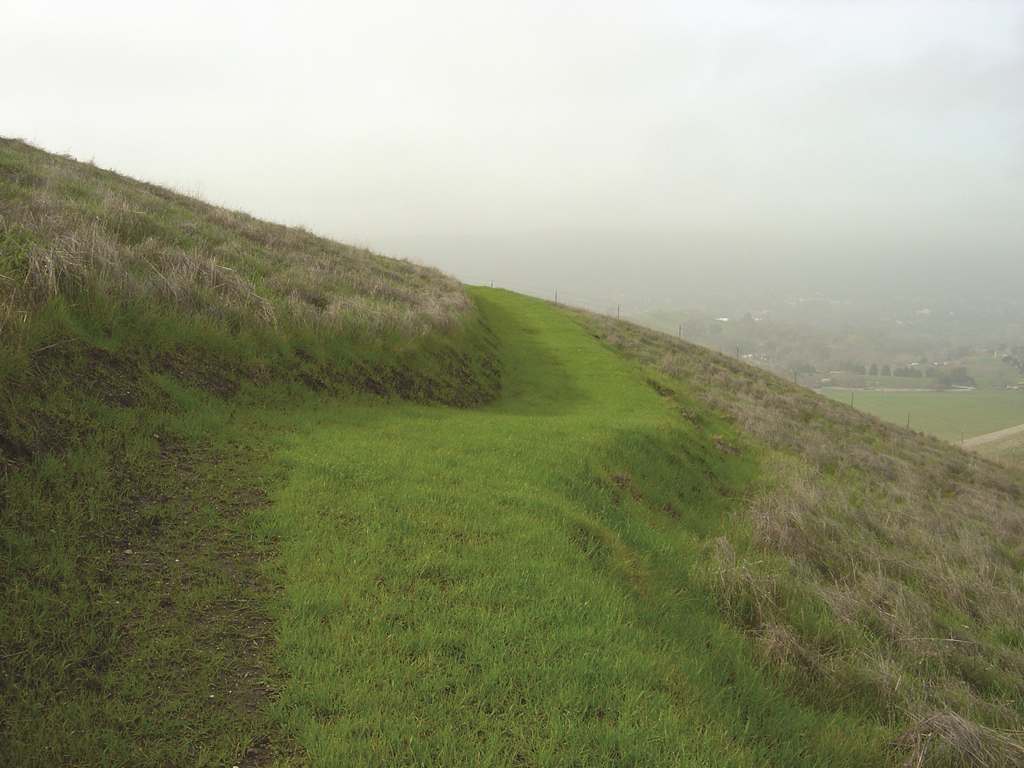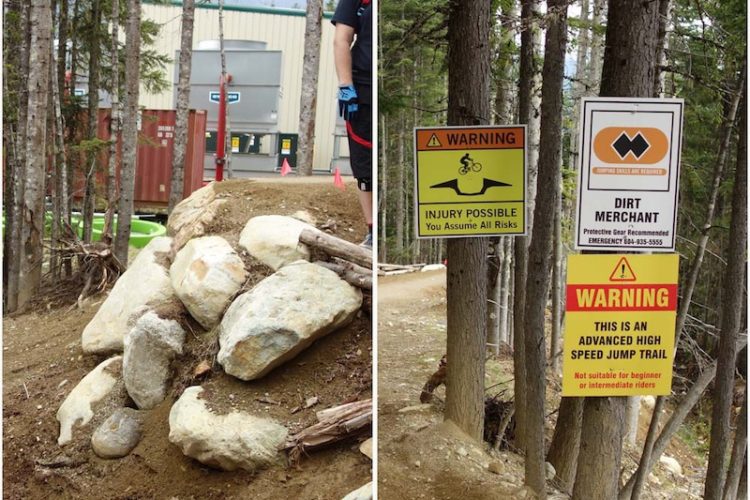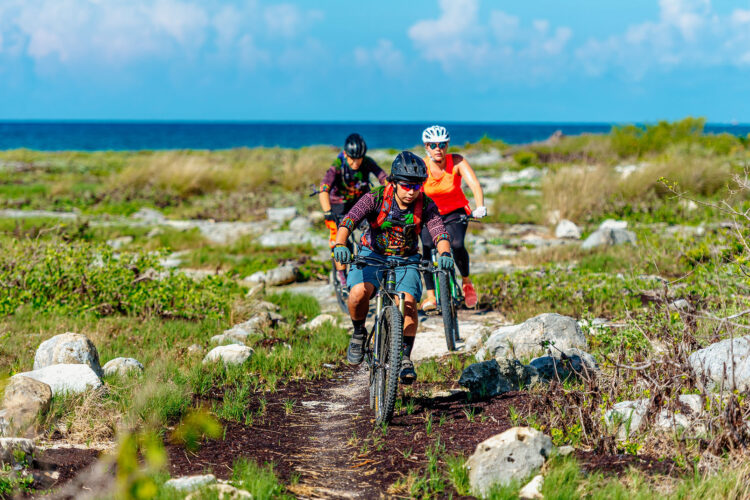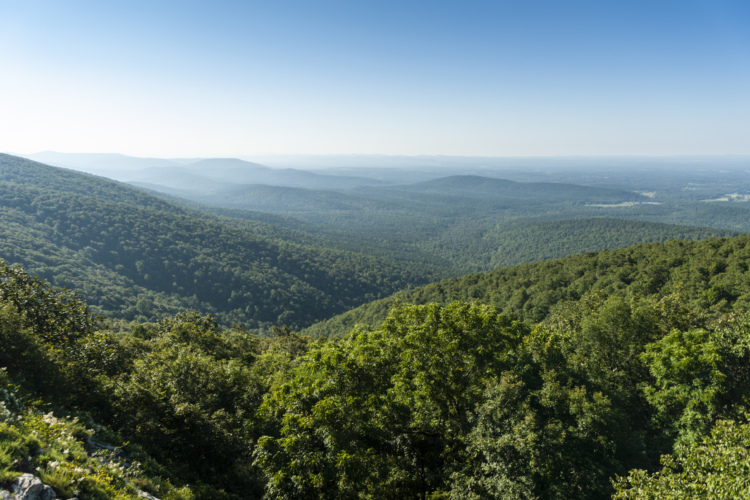
Water is very much a double-edged sword when it comes to mountain bike trails. On one hand, a lightly soaked piece of singletrack typically makes for the best possible conditions, where our tires hold a line better and give us more confidence to rail through a turn or around an S-curve. We describe the dirt by the way it makes us feel; like a hero.
On the other hand, water is an enemy of natural preservation. That’s not to say the results are always bad —the Grand Canyon turned out alright, however if you’re trying to build a nice jump line down the side of a mountain, then “canyon-like” is probably not how you want to describe the future of your trail surface.
This is where drainage comes into play. Maybe you’ve heard of the term “grade reversal” or “rolling grade dip,” but maybe not. These are the storm drains or roof gutters of trail systems and direct excess water away from where it isn’t wanted. Grade reversals are a change in vertical direction on a section of trail to redirect water.
Trail builder extraordinaire and trail building professor Tony Boone might have a rough idea of how a trail will zigzag its way up a hill side when he’s building something new, but it’s hardly as simple as digging a straight line from A to B. Why?
“Number one, it’s boring,” Boone says. “We got enough of those trails around.” Number two: You want a trail to break up the flow of water that starts to stream directly down singletrack which can cause erosion and ruts.
“So rolling contour design allows you to undulate the design before you construct your trail or section of trail,” he says. And grade reversals or rolling contour design redirect the potential streaming of water down a trail where it can cause erosion.
Ideally the trail is out-sloped, so when water rolls down the side of a hill and across the trail perpendicularly, it doesn’t start to pool or change directions and flow back into the trail.
“The beauty of grade reversals is that they are the most unobtrusive of all drainage features if they are constructed with smooth grade transitions,” says a U.S. Forest Service (USFS) handbook on trail construction and maintenance. “Grade reversals require very little maintenance.”
If they are built correctly, they’re fun to ride, Boone says, especially in or out of a turn. If not, grade reversals are more like a speed bump and are too short or too low. Water flows over the roller too easily or sediment fills the dip too quickly and then water flows over the roller. An out-sloping trail plays an important part here too so water can keep flowing off the side instead of pooling.
There are a few guidelines for where to place grade reversals. Boone likes to place them every 100 feet if possible for some sort of drainage. And “the steeper the trail, the more frequent you will need these grade reversals or rolling grade dips.” Above and below switchbacks is ideal too. And the recommendation isn’t restricted geographically — grade reversals are suitable for trails anywhere in the world, but the ease of which one can be built depends on the soil and terrain.
On older trails you may have noticed water bars, the wooden bars stretching across the trail, often at switchbacks. Though they used to be common, modern trails are more likely to utilize dips or grade reversals, Boone says.
“[Grade reversals] are pretty much what water bars, whether they be log water bars or rock water bars, were decades ago,” he says.

Grade reversals tend to be more user-friendly as well. Some advanced riders may have mastered the switchback hop up a water-barred V-turn, but many have problems maintaining momentum up them. Though the water bar itself might be more durable than a grade reversal that can erode over time, water bars have other issues.
“For existing trails with water problems, we encourage the use of rolling grade dips or knicks instead of waterbars,” writes the USFS. “Here’s why. By design, water hits the waterbar and is turned. The water slows down and sediment drops in the drain. Waterbars commonly fail when sediment fills the drain. Water tops the waterbar and continues down the tread. The waterbar becomes useless. You can build a good rolling grade dip quicker than you can install a waterbar, and a rolling grade dip works better.”


Lastly, grade dips and “knicks” are different than grade reversals. Grade reversals usually have to be planned into the construction of a new trail. This makes older trails a better match for dips or knicks which can be dug into existing trails as a drainage measure.
Some guidelines note that grade reversals should be subtle and unnoticeable for trail users. Most of the time they are, but after I chatted with Boone about the trailbuilding technique and went for a ride at a newly built trail system, I couldn’t help but notice how many grade reversals and dips and drains there are throughout the trail, which told me it was built with sustainability in mind. Kind of like when you buy a new car (or bike), you start to notice how many of the same model others have.
After a while, I’ll likely disconnect my attention to them again, unless they happen to be big enough to catch a little air.












1 Comments
Jul 27, 2022